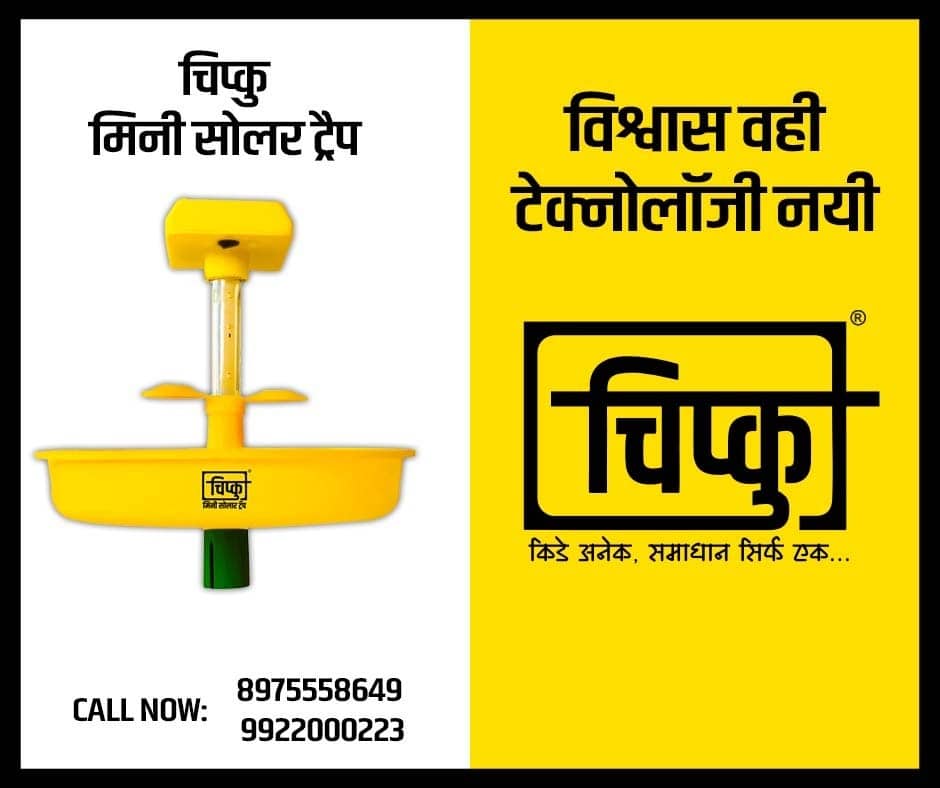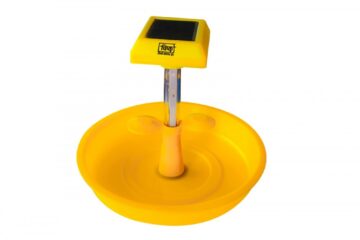
Solar trap for agriculture

I. Introduction
A. Engaging opening statement about the importance of pest control in agriculture.
B. Introduce the concept of the solar sticky trap and its role in sustainable farming practices.
C. Thesis statement: Solar sticky traps for agriculture provide an innovative and effective solution for pest management.
II. Understanding Pest Infestation Challenges in Agriculture
A. Discuss the detrimental effects of pests on crops and agricultural yield.
B. Highlight the limitations and drawbacks of traditional pest control methods.
C. Emphasize the need for sustainable and eco-friendly alternatives.
III. Introducing the Solar Sticky Trap A. Explain the concept and working principle of the solar sticky trap B. Describe the components and features of the trap, including solar-powered lights and adhesive surfaces C. Highlight the benefits of using solar-powered traps over conventional methods
IV. How Solar Sticky Traps Work A. Discuss the attraction and trapping mechanisms of the solar sticky trap B. Explain how the trap lures pests using light and captures them with adhesive surfaces C. Showcase the effectiveness of the trap in reducing pest populations
V. Advantages of Solar Sticky Traps in Agriculture
A. Environmentally friendly and chemical-free pest control.
B. Cost-effective and low-maintenance solution for farmers.
C. Minimization of crop damage and improved overall yield.
D. Enhanced pest monitoring and early detection capabilities
VI. Case Studies and Success Stories
A. Present real-life examples of farms or regions using solar sticky traps for pest control.
B. Share success stories and positive outcomes, such as increased crop productivity and reduced pesticide usage.
C. Highlight the experiences and testimonials of farmers who have benefited from solar sticky traps.
VII. Implementing Solar Sticky Traps in Agricultural Practices
A. Discuss the process of integrating solar sticky traps into farming systems
B. Provide guidelines on trap placement, maintenance, and monitoring
C. Address common challenges and offer practical tips for optimal trap utilization
VIII. Future Prospects and Innovations
A. Explore ongoing research and development in solar sticky trap technology.
B. Discuss potential advancements and improvements in trap design and effectiveness.
C. Highlight the role of solar sticky traps in sustainable agriculture and pest management.
IX. Conclusion
A. Summarize the key points discussed throughout the article.
B. Reinforce the benefits and potential of solar sticky traps in revolutionizing pest control in agriculture.
C. Encourage readers to explore the use of solar sticky traps for sustainable and efficient farming practices
Article
Solar Sticky Trap for Agriculture: Revolutionizing Pest Control in Farming

Introduction
Pests have long been a bane to farmers, causing significant damage to crops and diminishing agricultural yields. Traditional pest control methods often rely on chemical pesticides, which not only harm the environment but also pose risks to human health. In search of a sustainable and eco-friendly alternative, farmers are turning to innovative solutions such as the solar sticky trap. This article delves into the concept of solar sticky traps for agriculture and explains how they can effectively manage pests while promoting a greener farming approach.
Understanding Pest Infestation Challenges in Agriculture
Pests, ranging from insects to rodents, can wreak havoc on crops, leading to substantial financial losses for farmers. Traditional pest control methods, including the use of chemical pesticides, have drawbacks such as environmental pollution, the development of pesticide resistance, and detrimental effects on beneficial insects. It is crucial to explore alternatives that minimize these issues and providesustainable pest management solutions.
Introducing the Solar Sticky Trap
The solar sticky trap offers a promising solution for pest control in agriculture. This innovative trap harnesses solar energy to attract and capture pests without the need for harmful chemicals. It consists of solar-powered lights that emit specific wavelengths to attract pests, while adhesive surfaces trap and immobilize them. By using renewable energy and adhesive surfaces, the solar sticky trap presents a sustainable and effective approach to pest management.
How Solar Sticky Traps Work
The solar sticky trap utilizes two primary mechanisms to control pests. First, the trap emits light in a specific spectrum that attracts pests, drawing them towards the trap. Once pests approach the trap, the adhesive surfaces capture and hold them, preventing further damage to crops. The trap is designed to be highly effective in luring and trapping pests, offering a reliable solution for pest control in agricultural settings.
Advantages of Solar Sticky Traps in Agriculture
One of the significant advantages of solar sticky traps is their environmentally friendly nature. Unlike chemical pesticides, these traps do not contaminate soil, water, or air. They provide a chemical-free pest control solution, minimizing the risk of harmful effects on human health and beneficial organisms. Additionally, solar sticky traps are cost-effective and require minimal maintenance, reducing the financial burden on farmers.
Implementing Solar Sticky Traps in Agricultural Practices
To implement solar sticky traps effectively, farmers need to consider various factors. Proper trap placement is crucial, strategically positioning traps in areas with high pest activity. Regular monitoring is essential to assess trap effectiveness and make any necessary adjustments. Farmers should also adhere to maintenance protocols, such as cleaning and replacing adhesive surfaces when needed. By following these practices, farmers can optimize the use of solar sticky traps in their farming systems.

Future Prospects and Innovations
The future of solar sticky traps holds immense potential for further advancements. Ongoing research and development aim to improve trap design, enhancing trapping efficiency and expanding the range of pests targeted. Innovations such as smart sensors and automated trap systems are being explored to enhance the effectiveness and convenience of solar sticky traps. With continuous innovation, solar sticky traps will continue to revolutionize pest control practices in agriculture.
Conclusion
The solar sticky trap presents a game-changing solution for pest control in agriculture. By harnessing solar energy and utilizing adhesive surfaces, this innovative trap offers an environmentally friendly and effective approach to pest management. Farmers can benefit from reduced crop damage, increased yields, and minimized pesticide usage. Embracing solar sticky traps not only ensures sustainable pest control but also promotes a greener and more resilient farming industry.

FAQs
- Are solar sticky traps safe for the environment?
- Yes, solar sticky traps are environmentally safe as they do not involve the use of chemical pesticides that can harm the ecosystem.
- How do solar sticky traps help in reducing crop damage?
- Solar sticky traps attract and capture pests, preventing them from causing further damage to crops.
- Can solar sticky traps be used in organic farming?
- Absolutely! Solar sticky traps align with organic farming practices as they provide chemical-free pest control solutions.
- Do solar sticky traps require a power source?
- Solar sticky traps are powered by solar energy, eliminating the need for external power sources or electricity.
- What types of pests can solar sticky traps control?
- Solar sticky traps can effectively control a wide range of pests, including flying insects and crawling pests commonly found in agricultural settings.

# India’s 1st Solar trap provider
Introducing the Chipku Solar Trap, your go-to solution for sustainable pest control! Built with cutting-edge, solar-powered technology, this device provides round-the-clock protection for your crops, gardens, or outdoor spaces.
Be ready to outsmart pests without the use of harmful chemicals or pesticides!
For more blog visit our page



